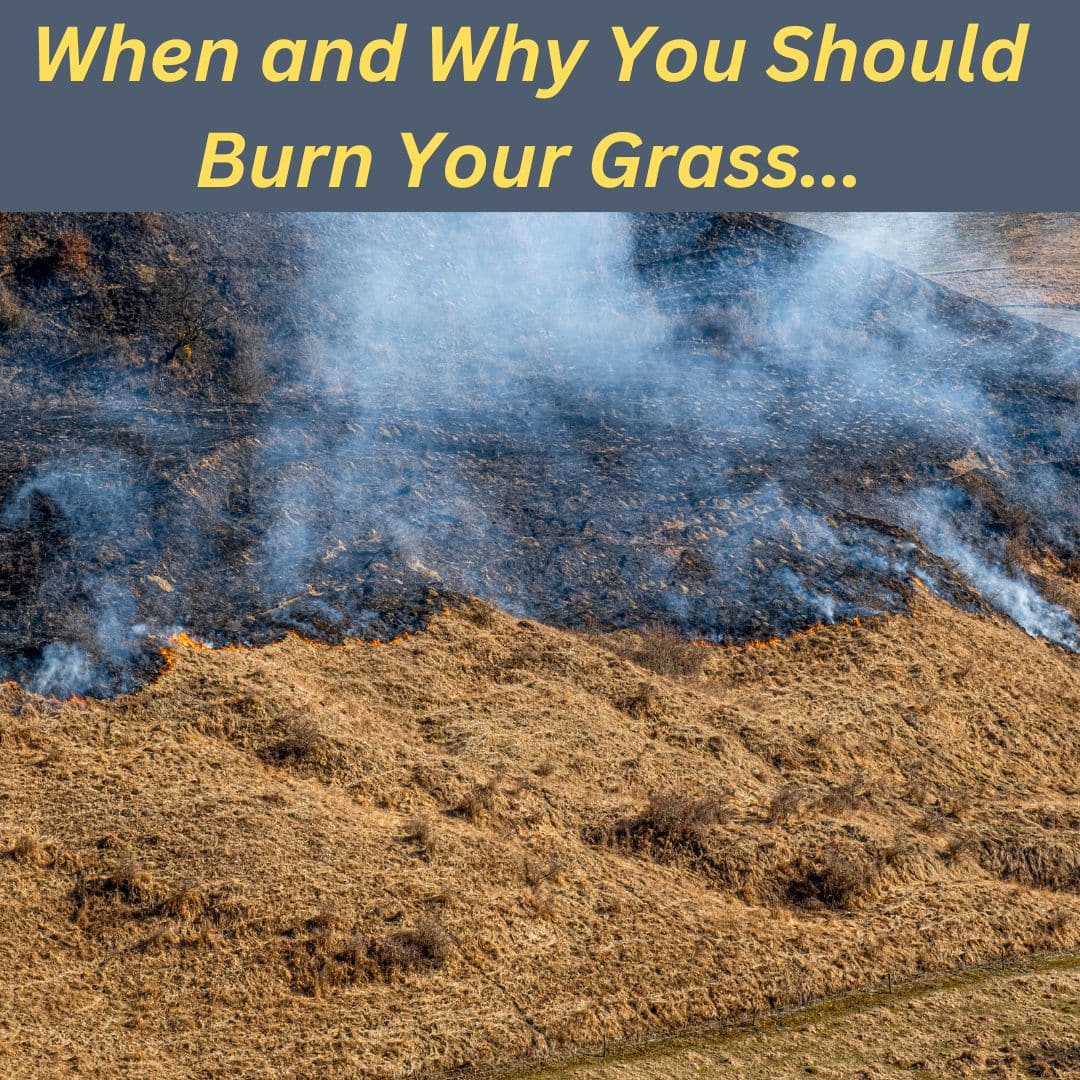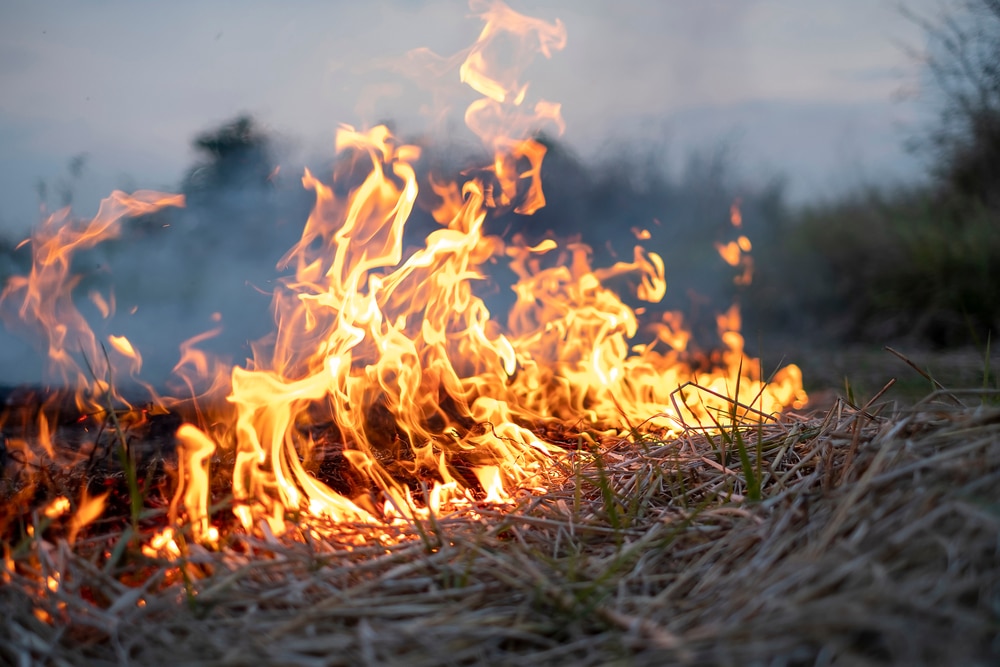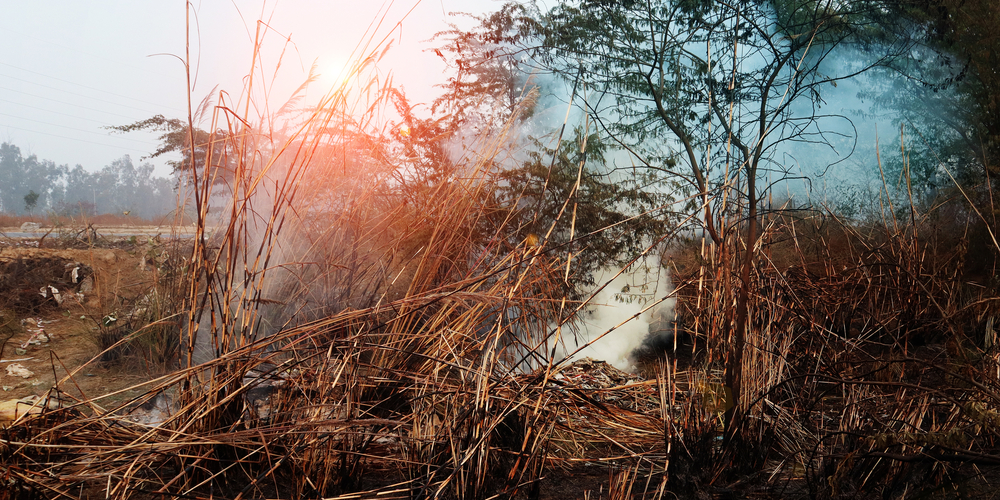
Have you ever wondered why anyone would intentionally set their lawn on fire? It sounds counterintuitive at first, especially when we learn all our lives that fire is destructive and should be carefully avoided.
Yet, in the world of agriculture and land management, burning grass has stood the test of time as a useful (though often misunderstood) practice.
In this article, we’ll take a deep dive into why people burn grass, the benefits of doing so, the drawbacks you need to watch out for, and how to approach grass burning safely and responsibly.
Understanding the Tradition of Grass Burning
Grass burning has been around for centuries, and it’s often found in agricultural histories across many cultures. This practice isn’t just random pyrotechnics for fun. In many parts of the world, controlled burns—also known as prescribed burns—are a vital part of land management. When properly handled, fire can help renew the soil, eliminate weeds, and pave the way for a healthier ecosystem.
You might see large plots of land being deliberately lit on fire by experienced ranchers or land managers. It’s not necessarily an act of destruction; rather, it is a calculated process to boost soil quality and prepare the area for new growth. Ranchers and seasoned gardeners alike value grass burning because it can address some of the most persistent lawn and field problems.

Even though grass burning has a long-standing tradition, you can’t just grab a match, set the grass ablaze, and expect magic to happen. It takes careful planning, awareness of local laws, and knowledge about the potential environmental impact.
There is also a timing element—burning at certain times of the year may yield the best results, whereas burning at the wrong time could damage your lawn or garden more than it helps.
The core principle behind why anyone would burn grass is simple: By removing invasive plants or accumulated debris, you’re essentially hitting the “reset” button on that stretch of land. Some find success with this technique to clear out weed infestations, while others see it as a method to introduce greater field diversity. Whichever way you look at it, history shows that this practice can work wonders when used responsibly.
Why Burn Grass? Key Benefits and Considerations
For many people, the word “fire” carries a natural sense of fear and apprehension. We’re taught from a young age to extinguish flames and prevent them from spreading. However, in the context of controlled burning, fire becomes a tool rather than a threat. It’s still potent and requires caution, but when wielded properly, it can offer multiple benefits that traditional lawn maintenance methods can’t always match.
Below are some of the main ways in which burning grass can transform your lawn or field:
1. Swift Weed Control
Weeds can be the bane of any homeowner or gardener’s existence. These pesky plants pop up everywhere, hog the nutrients in the soil, and can survive through some of the harshest conditions. Despite relentless weeding, chemical sprays, or other methods, certain weed species continue to thrive, making them a constant source of frustration.
Burning grass targets weeds at their roots, literally. By setting your lawn ablaze in a controlled manner, you destroy both the adult plants and, in many cases, the seeds lurking in the soil’s top layer. This approach can dramatically cut down on weed populations, allowing the healthier grass or garden plants to flourish without undue competition. Think of it as pressing a “clear all” button on an overrun area, giving you a blank canvas to re-seed or re-landscape as you wish.
Still, it’s not as simple as lighting one match and being done. You’ll want to ensure that your burn reaches the areas most infected by weeds. You also need to be mindful of the grass you intend to keep. Timing is key: Burning when weeds have matured can be more effective than burning too early.
2. Enhancing Field Diversity
Whether you own a small suburban backyard or sprawling farmland, diversifying the plants you grow can be a top priority. Different grasses, flowers, or crops can coexist in a balanced environment if the competition from invasive species is reduced. This is where grass burning comes in handy.
When you clear out old growth and weeds through a burn, you open up your land for new opportunities. Farmers can subdivide their fields and cultivate different types of crops. Homeowners can re-landscape sections of their yard for decorative gardens, outdoor patios, or new flowerbeds. The old, stubborn vegetation is no longer an obstacle, making space for fresh life to spring forth.
Moreover, diversification can also benefit the broader ecosystem. A mix of native grasses, wildflowers, and well-chosen ornamental plants supports local pollinators like bees and butterflies. If you plan your burn correctly, you might see a more vibrant, healthy, and diverse plot of land emerging in the months and years that follow.
3. Clearing Organic Waste
If you’ve ever raked your lawn after a season of heavy leaf fall, you know how much debris can accumulate in a short period. Now, multiply that by several years of partial neglect or minimal yard maintenance. Before you know it, there’s a thick layer of organic matter—dead leaves, grass clippings, small branches, and more—clogging the soil surface.
This buildup can block essential sunlight from reaching the grass roots. It can also prevent moisture and nutrients from effectively penetrating the soil. Over time, your grass struggles to thrive, and the lawn’s overall health diminishes. A controlled burn can swiftly clear away this organic waste, exposing the soil to sunlight and allowing water to reach the root zones.
With that said, not all organic material is bad. Decomposing leaves or grass clippings can help enrich the soil. However, when the buildup becomes too dense, you may find mold, mildew, or pests making themselves at home. A carefully managed burn removes all the harmful debris, providing a fresh start for your lawn or field.
The Drawbacks of Burning Grass
For every silver lining, there’s a cloud looming. Grass burning isn’t all sunshine and roses, and it can quickly become problematic if done without proper planning or caution. Some people might see grass burning as a last resort, and there are good reasons for that perspective. Let’s explore a few important drawbacks you should keep in mind before you decide to set flame to your yard.
1. Risk of Wildfire
Fire doesn’t discriminate. When flames are lit, they spread to anything flammable in their path. This factor alone makes grass burning a risky endeavor if you’re not well prepared. A sudden gust of wind, drier than expected conditions, or simply a lack of supervision can escalate a small burn into a widespread wildfire.
If a burn gets out of control, you’re looking at potential property damage and environmental harm. Restoring the land after an unplanned wildfire can be extraordinarily expensive and time-consuming. Preventive measures include keeping a water source nearby, creating a firebreak (such as a plowed strip of land) around the target area, and closely monitoring the weather before lighting up.
2. Legal and Regulatory Hurdles
In many areas, local ordinances or state laws either restrict or outright ban the burning of grass and other yard waste. The reasons are varied, from air quality concerns to the risk of igniting neighboring properties. Before you even think about burning, you should check for any regulations in your region.
Are permits required to conduct a controlled burn?
Are there any specific seasons or times of day when burning is allowed or prohibited?
Do you need professional supervision or approval from local authorities?
Some municipalities demand that you notify the fire department or obtain a special permit. Failure to comply can result in hefty fines or even legal action. If you live in a densely populated area, your neighbors might have concerns about smoke or potential hazards. It’s always better to research ahead of time than to risk conflict or legal troubles later.
3. Habitat Disruption
Your property might seem like just a stretch of land, but to many creatures—such as insects, birds, and small mammals—it’s a vital habitat. A controlled burn can destroy nests, burrows, and food sources if you aren’t aware of where these creatures live. In some cases, you can inadvertently harm beneficial insects that help pollinate your garden or control pests.
Before burning, consider conducting a quick survey of the area. Look for signs of animal activity or nesting sites. If possible, relocate creatures or time your burn for a season when they’re less likely to be affected. Balancing the benefits of grass burning with ecological considerations can help preserve the natural harmony of your land.
How to Burn Grass Safely and Responsibly
If you decide that grass burning is right for your situation, proper precautions are critical. Safety isn’t an optional afterthought; it’s the foundation of a successful controlled burn.
Here’s a quick checklist for doing it responsibly:
Check Regulations First
Make sure you’re allowed to burn in your area. Obtain any necessary permits, or consult with local officials about your plan.
Pick the Right Day
Weather conditions are crucial. Aim for a day that isn’t too windy, with moderate humidity. Check the forecast for potential rain, thunderstorms, or strong gusts that could sabotage your efforts.
Prepare Your Site
Clear the area of unnecessary debris and mark the boundaries of where you plan to burn. Create a firebreak (such as a strip of turned-over soil) around the perimeter.
Have Safety Measures on Hand
Keep hoses, buckets of water, or extinguishers nearby. If the fire starts spreading, you must act quickly to contain it.
Monitor Continuously
Never leave a burn unattended. Watch the fire at all times, and keep an eye on how it’s moving.
Extinguish Thoroughly
Once you’ve burned the targeted area, douse the flames completely. Embers can reignite hours later if not properly extinguished.
By treating your burn like a structured project—planning from start to finish—you not only maximize the benefits but minimize the risks. Remember, the goal is to refresh your land, not to create an inferno that gets out of hand.
Post-Burn: What’s Next?
After the flames die down and the smoke clears, your land is essentially a blank slate. Depending on your end goals, you can then:
Reseed the area with your chosen grass type.
Plant a new flowerbed for aesthetic appeal.
Test and amend your soil with fertilizers or organic matter.
Implement a landscaping design you’ve been dreaming about.
The post-burn period is a fantastic opportunity to introduce new life and shape your property’s future. Once the burn has removed unwanted debris and weeds, fresh growth has the freedom to take root without heavy competition. Your field diversity plan or garden makeover can kick off in full swing.
Why Burn Grass: Final Thoughts
Burning grass may sound extreme, but it’s a time-tested approach in agriculture and lawn care that can work wonders when carefully planned and executed. From controlling stubborn weeds and facilitating field diversity to clearing out years of organic waste, a controlled burn resets the stage for healthier growth. Still, it’s not a practice to be taken lightly. Fire is indiscriminate and can quickly become dangerous if mishandled.
Always remember to stay on the right side of the law, keep local wildlife in mind, and follow all necessary safety steps. While there are more conventional methods—like chemical weed killers, mechanical tilling, or strategic mowing—sometimes burning can be the most direct solution, provided you do it responsibly.
Bonus: Frequently Asked Questions About Burning Grass
Below are five questions that often come up for those curious about (or intimidated by) the idea of burning grass. These answers can help you decide whether it’s the right step for your lawn or property.
1. Will burning my grass permanently damage the soil?
In most cases, a properly controlled burn won’t cause permanent harm to the soil. The flames usually don’t reach deep enough to destroy beneficial microbes beneath the surface. However, frequent or poorly managed burns might alter the soil structure over time. It’s best to plan your burn carefully and avoid overdoing it.
2. Is burning grass faster or more effective than chemical weed killers?
Both methods have pros and cons. Chemical weed killers can be easier to apply but may pose environmental and health risks. Burning is more direct and eliminates weeds on contact, but it comes with its own set of safety and environmental considerations. The choice often depends on your comfort level, local regulations, and the extent of your weed problem.
3. How often should I consider burning my lawn or field?
There’s no one-size-fits-all answer. Some land managers use controlled burns every few years to maintain large tracts of grassland. For a typical home lawn, you might opt for a burn only as needed—perhaps when the weed situation or debris buildup becomes unmanageable. Always ensure your timing aligns with the best season for the type of grass you have.
4. What’s the best time of year to burn grass?
This varies by region and climate. Many experts recommend late winter or early spring, as the ground is often moist enough to prevent widespread fire, and weeds are easier to eliminate before they mature. Others prefer autumn to clear out the season’s debris. Check local agricultural extensions or lawn care guidelines for more specific recommendations.
5. Do I need professional help to burn my grass?
If you’ve never attempted a controlled burn, hiring or consulting professionals can be a smart move. They’ll know how to create firebreaks, manage the burn effectively, and reduce the risk of accidental spread. Plus, professional guidance might be mandatory under certain local regulations. If you’re unsure, it’s wise to seek expert advice rather than risk damage to your property.
By now, you should have a comprehensive understanding of why burning grass is sometimes viewed not as an act of destruction, but as a strategic tool for land and lawn management. When done right, fire can rejuvenate the soil, eliminate pests and weeds, and give you a clean slate for planting or landscaping. If you decide to move forward with grass burning, just remember: respect the power of fire, plan meticulously, and never hesitate to consult local experts or authorities. Doing so will help you reap all the benefits while steering clear of any fiery mishaps.



